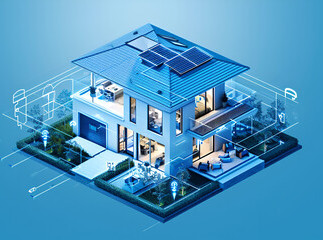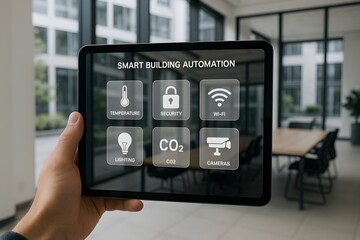The Evolution of Smart Connected Buildings
- Fitzemeyer & Tocci
- Oct 29
- 2 min read
Buildings today are more than just physical structures - they are becoming smart, connected ecosystems. As technology is quickly advancing, data and intelligence are becoming more important and therefore play a crucial role in how buildings are designed, constructed and operated.
This blog will explore the adoption of smart buildings and how they are reshaping the built environment by addressing not only global challenges, such as climate change, energy efficiency, and resource scarcity – but also many local needs including occupant comfort, safety, and operational cost control.
TRANSFORMING SPACES INTO SMART, CONNECTED SYSTEMS
GLOBAL CHALLENGES
Climate Change & Sustainability
Buildings account for roughly one third of the world’s energy and produce about a quarter of CO2 emissions. Smart systems address these issues by managing heating, cooling, and lighting in real time, which reduces waste and supports renewable energy integration. Ways systems cut energy use and emissions include:
AI driven optimization anticipates demand and adjusts systems – reducing waste.
Dynamic load management shifts energy to off-peak times, lowering utility costs.
Integration renewables and energy storage enable buildings to generate, store, and return power back to the grid.
Resource Scarcity
Many resources such as water, raw materials, and usable space are becoming more costly and scarce. Traditional systems often waste these resources – for example, cooling an empty room or overwatering landscapes. Fault Detection & Diagnostics (FDD) systems utilize sensors to:
Monitor usage
Detect leaks
Optimize space
Monitoring HVAC, lighting, and controls and identifying deviations from normal operation allows more efficient and responsible
use of resources.
LOCAL NEEDS
Occupant Experience & Well Being
Occupants expect healthy and personalized spaces. Smart buildings focus on creating a healthy and comfortable environment:
Smart controls automatically change temperature, lighting, and ventilation based on occupancy and activity levels. Additionally, occupants can adjust these controls through an app or desk-level controls.
Air quality monitoring can track pollutants and keep spaces fresh, helping prevent illnesses.
Smart navigation & space use help people find rooms, desks, and people as well as optimizing usage and cleanliness of facilities.
Building Management & Operations
Traditionally, building operations are highly reactive, however advancements in technology has transformed operations into a proactive process.
Utilizing predictive analytics and AI, smart buildings automatically anticipate problems and adjust systems.
Digital twins are a virtual model of a building that mirrors real-time data. Managers can test different conditions or HVAC settings without disrupting operation.
These tools allow managers to be more proactive and can oversee and troubleshoot problems in the environment as occupants and automated systems interact to meet their preferences, making the building a much more responsive service.
CONCLUSION
Smart buildings are changing how the built environment is designed, operated, and constructed. By combining data, automation, and intelligence, global challenges as well as local needs are being addressed.
Ready to take the next step in understanding the evolution of smart buildings? Download our guide to learn more about how technology is reshaping the built environment and improving building performance.

Written by:
Ryan Abbotoni
Mechanical Designer










